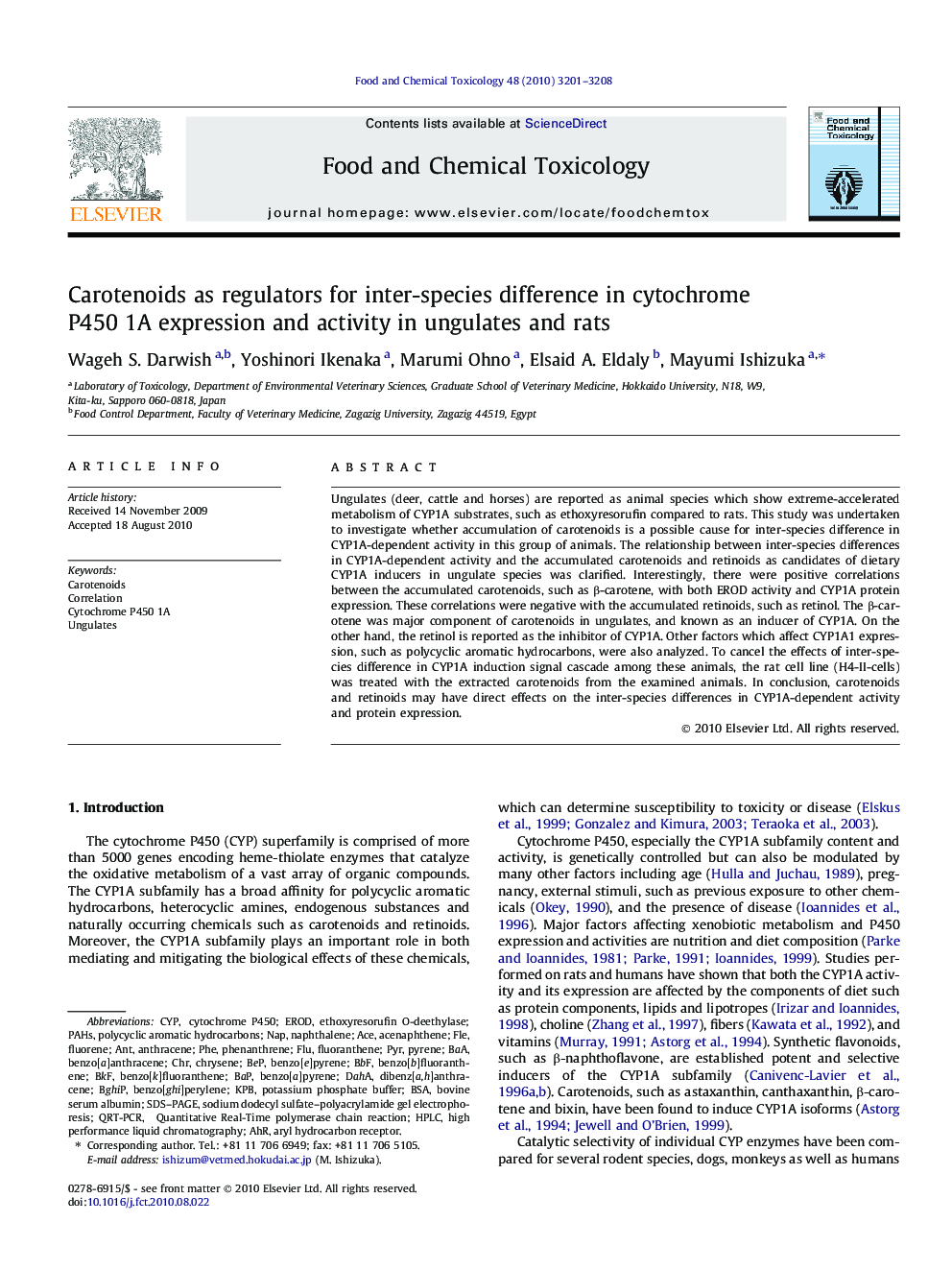| Article ID | Journal | Published Year | Pages | File Type |
|---|---|---|---|---|
| 2585789 | Food and Chemical Toxicology | 2010 | 8 Pages |
Ungulates (deer, cattle and horses) are reported as animal species which show extreme-accelerated metabolism of CYP1A substrates, such as ethoxyresorufin compared to rats. This study was undertaken to investigate whether accumulation of carotenoids is a possible cause for inter-species difference in CYP1A-dependent activity in this group of animals. The relationship between inter-species differences in CYP1A-dependent activity and the accumulated carotenoids and retinoids as candidates of dietary CYP1A inducers in ungulate species was clarified. Interestingly, there were positive correlations between the accumulated carotenoids, such as β-carotene, with both EROD activity and CYP1A protein expression. These correlations were negative with the accumulated retinoids, such as retinol. The β-carotene was major component of carotenoids in ungulates, and known as an inducer of CYP1A. On the other hand, the retinol is reported as the inhibitor of CYP1A. Other factors which affect CYP1A1 expression, such as polycyclic aromatic hydrocarbons, were also analyzed. To cancel the effects of inter-species difference in CYP1A induction signal cascade among these animals, the rat cell line (H4-II-cells) was treated with the extracted carotenoids from the examined animals. In conclusion, carotenoids and retinoids may have direct effects on the inter-species differences in CYP1A-dependent activity and protein expression.
